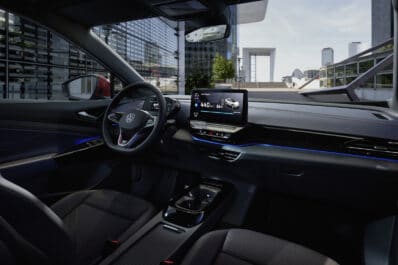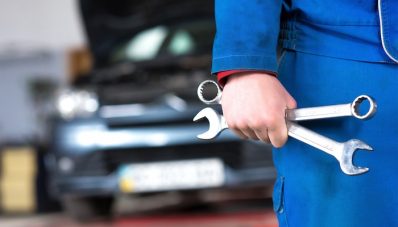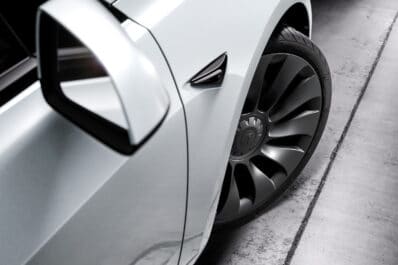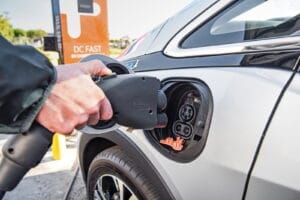
Having all new vehicles be EVs by 2035 is not only better for the environment, better for creating a new industrial manufacturing base and better for American’s wallets, it’s actually doable.
Those are the conclusions coming out of a new study titled “2035 Report 2.0: Plummeting Costs and Dramatic Improvements In Batteries Can Accelerate Our Clean Transportation Future” from the University of California, Berkeley.
The report, officially issued April 15, revealed the rapid electrification of new car and truck sales would save consumers $2.7 trillion by 2050, which translates to about $1,000 for every household per year during the next 30 years, and would support a net increase of more than 2 million jobs in 2035.
Combined with a 90% clean energy grid, electrifying all new car and truck sales would reduce air pollution, prevent 150,000 premature deaths and avoid $1.3 trillion in environmental and health costs through 2050.
“The case for electric vehicles is stronger than ever before and one of the most exciting findings of this study is the potential for large savings for all households. With the right policies and infrastructure, electric cars and trucks will be much cheaper to own and operate,” said Nikit Abhyankar, senior scientist at the University of California, Berkeley Center for Environmental Public Policy.

Grid upgrade needed
Pairing a clean grid with a clean transportation system would put the U.S. on a path to limit global warming to 1.5 degrees Celsius, the target scientists say is required to avoid the worst consequences of the climate crisis.
In October 2018, the U.N.’s Intergovernmental Panel on Climate Change warned that the world had only a dozen years to halve emissions in order to limit warming to 1.5 degrees Celsius.
By 2030, the report finds the U.S. could electrify all new car sales and over 80% of new truck sales, power them with 90% clean electricity, and reduce U.S. economy-wide climate pollution emissions by 35 percent.
Should aggressive building and industrial electrification be pursued on a similar timeline, U.S. economy-wide climate pollution could be reduced 45% by 2030, the report’s authors contend.
Social justice

“There are significant, economy-wide benefits from switching to electric cars and trucks, especially in communities of color and frontline communities that are disproportionately exposed to vehicle pollution,” said David Wooley, professor at the University of California, Berkeley Goldman School of Public Policy and executive director of the Center for Environmental Public Policy.
“But these benefits will simply not be realized without ambition and leadership on the part of policymakers and decision-makers. Every year America stalls, our vehicle and battery manufacturing industries fall behind in global competitiveness, consumers are saddled with higher costs, and we miss the ever-narrowing window to address the climate crisis and ensure a livable planet.”
The 2035 Report 2.0 models the total cost of ownership for gasoline and electric vehicles, finding that electric trucks are already cheaper to own than diesel versions on a total cost-per-mile basis, and electric cars will be cheaper than gasoline equivalents within the next five years.
Infrastructure part of the plan
The study models public charging infrastructure, estimating the number and cost of the public charging ports needed to accommodate tens of millions of electric cars and trucks, the power supplies needed to meet the increased power demand from this shift, and the capital investment needed to achieve an accelerated transition.
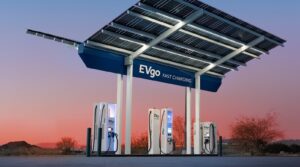
To make this a reality requires great investment in EV tech, which fortunately OEMs are already making, said Nikrit. In fact, industry already surpassed projections made a few years ago about price and energy density. For example, battery prices have dropped between 60 and 70% since 2016.
Nikrit said experts also underestimated how well the latest generation of EV batteries would perform. This shows that “industry always beats projections.”
Great for environment
The environmental improvements could be huge if EV production was complete by 2030, Nikrit said. Greenhouse gases would fall by 60% in 2035 and 93% by 2050.
And it’s possible that the electrical grid could be 90% clean, with advances in wind and solar technologies. So going EV would not be a case of robbing Peter to pay Paul in terms of greenhouse gas production, according to the report.
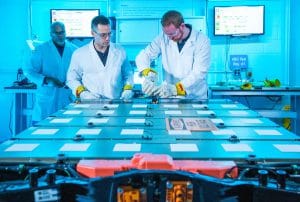
To reach these goals electric production would have to increase by 2.2% a year between 2020 and 2050. But that’s also doable because electric production in past has done that. Between 1975 and 2005 U.S. electric production increased by an average rate of 2.6% a year.
“With political leadership, policy ambition, and a focus on an equitable transition for all, the U.S. can chart the course for a clean transportation future,” said Sara Baldwin, director of Electrification Policy at Energy Innovation.
Nikrit added, when asked about loss of jobs in the oil industry, that the oil industry sells about $800 billion a year in gasoline.
This production, while costly, is relatively light in terms of labor. So those hundreds of billions of dollars spent on gas will go elsewhere in the U.S. economy, and that will generate more than enough jobs to compensate for any losses in oil production labor.
There will also be much less need for gas stations. Baldwin said that there will be some job losses in automotive repair and maintenance. EVs have fewer parts, thus fewer things to go wrong. So there will be need of some sort of job retraining program for people affected by this change.
Biden has a plan
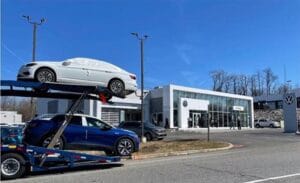
Baldwin said that making these goals happen will require a strong political will on the federal and state level. There will need to be purchasing incentives as well as new regulations.
When asked about President Joe Biden’s recent $174 billion proposal, she said that many of the goals match what they have been suggesting, Baldwin said.
“That shouldn’t be a surprise,” Baldwin said. “The Biden administration asked for advice from experts like us, so it’s reasonable their plan incorporates a lot of what we say.”
Nikrit did say that the political situation looked a lot different six months ago. But time and technology change circumstances as well.
The federal government can help by adding EVs to federal fleets and help build EV infrastructure. Building 300,000 EV charging stations a year is already being done in China, Nikrit said. So it’s possible for the U.S. to do the same.
There also needs to be an integrated electrical grid and transportation plans by the federal and state governments.
To help sell EV tech to the public vehicle charging times must be cut. That means people pay less for power when demand is at its lowest. So someone who wants to charge his or her car at 3 a.m. will pay less than someone who charges a car at 2 p.m.

When asked about rare earth supplies, Nikrit said technology is changing that equation as well. Lithium battery tech is improving and if experts are right lithium batteries recycling rates can reach 93%.
ICE-powered cars will be around a while regardless
The Internal Combustion Engine (ICE) car isn’t going to magically disappear, Baldwin said. There are hundreds of millions of them on the road today. Many people can’t afford to buy new cars, so they buy used. So for the near term, that means buying ICE-powered vehicles because there aren’t enough EVs in the secondary market to meet demand.
So there will be a need for gas stations and ICE mechanics for a while. But these numbers should change as time goes on, and by 2050, almost all cars on the road should be EVs.
“We believe by 2035 30% of cars on the road will be EVs,” Nikrit said. “By 2050, that will be almost 100%. Just thinking out loud. GM has been pushing EVs hard for the last 12 months. And we’ve seen battery price drop $70 per kilowatt generation. The Biden plans dovetails nicely with what industry has been doing. So this is really possible.”


